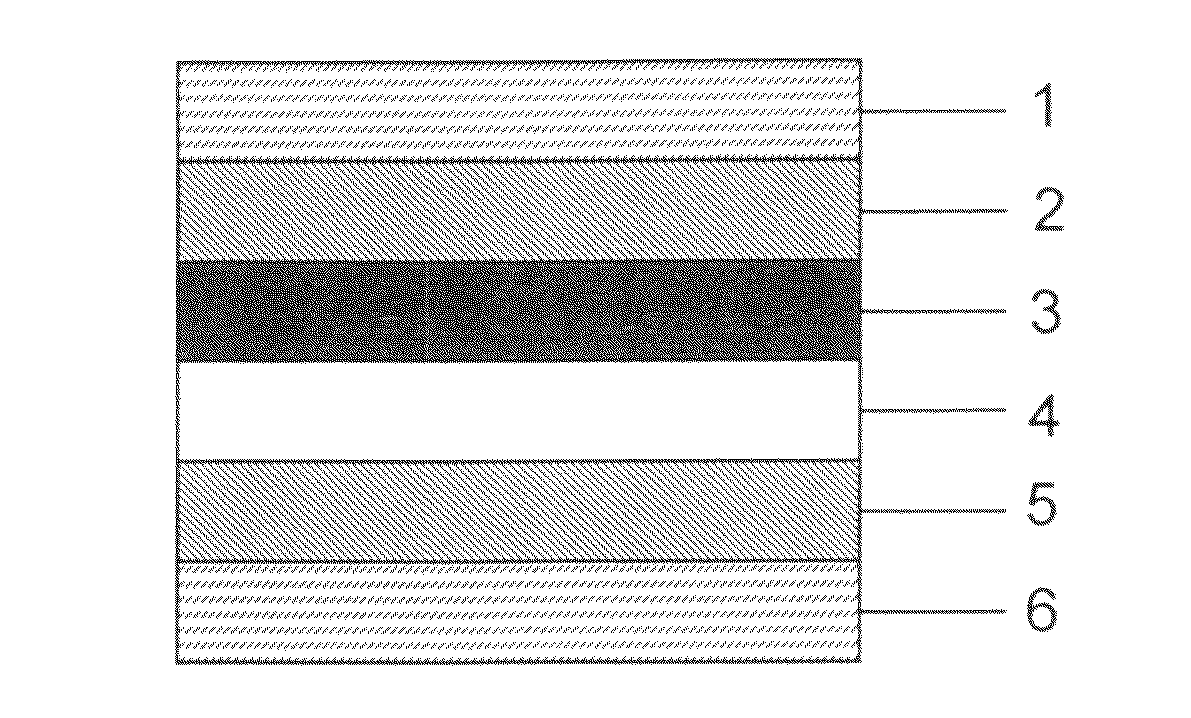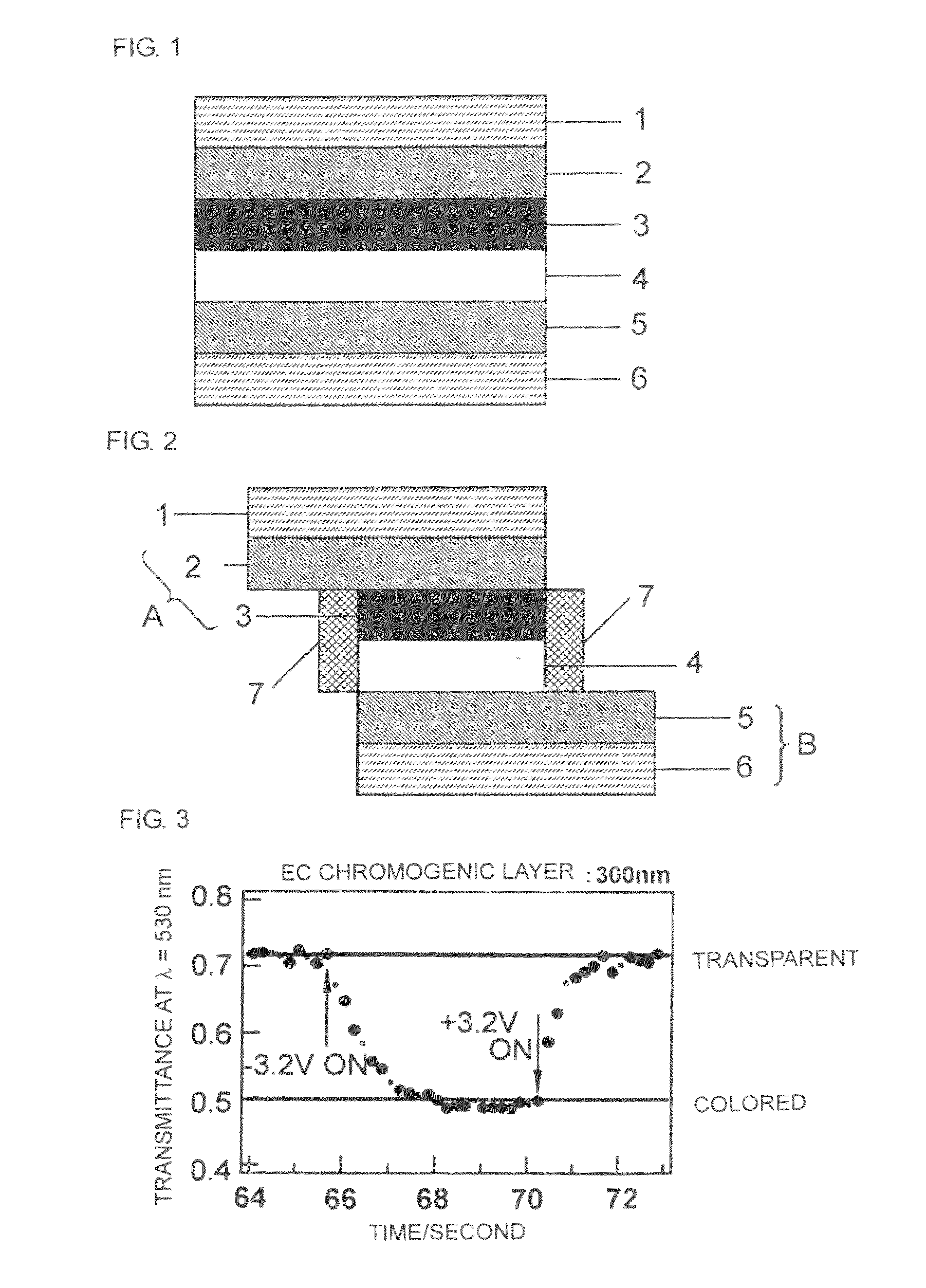Electrochromic material
a technology of electrochromic materials and elastomers, applied in the field of electrochromic materials, can solve problems such as cost increases, and achieve the effects of high response speed, excellent repeatability, and high coloring efficiency
- Summary
- Abstract
- Description
- Claims
- Application Information
AI Technical Summary
Benefits of technology
Problems solved by technology
Method used
Image
Examples
example 4
[4] Synthetic Example 4
Synthesis of HBPS-EC-13 (I−, Br−)
[0256]
Synthesis of 2-Hexyl-1-iododecane
[0257]To a reaction vessel, 2.682 g (10.3 mmol) of 2-hexyl-1-chlorodecane, 7.483 g (49.9 mmol, 4.8 eq) of sodium iodide, and 100 mL of acetone were added. The whole was refluxed at 60° C. overnight. The reaction mixture was allowed to reach room temperature, and acetone was removed by evaporation. The residue was extracted with ethyl acetate, and then the organic phase was washed with a saturated brine three times. The organic phase was dried over magnesium sulfate and filtered. The filtrate was concentrated, and the concentrate was dried under vacuum to give 3.075 g (8.73 mmol) of 2-hexyl-1-iododecane as a dark red liquid (crude yield: 85%).
Synthesis of [1-(2-Hexyldecyl)-4,4′-bipyridinium]bromide
Synthesis of [1-(2-Hexyldecyl)-4,4′-bipyridinium]iodide
[0258]Under a nitrogen atmosphere, to a reaction vessel, 499 mg (3.19 mmol) of 4,4′-bipyridyl, 1.496 g (4.25 mmol, 1.3 eq) of 2-hexyl-1-iodod...
example 5
[5] Synthetic Example 5
Synthesis of HBPS-EC-2 (Br−, I−)
Synthesis of HBPS-EC-2 (Br−, I−)
[0260]
[0261]Under the scheme above, HBPS-EC-2 (Br−, I−) was prepared following a synthetic procedure similar to that described above.
[0262]When the obtained HBPS-EC-2 (Br−, I−) was allowed to reach room temperature, it was insolubilized in a solvent (DMF).
example 6
[6] Synthetic Example 6
Synthesis of HBPS-EC-3 (2Br−)
[0263]
[0264]Under the scheme above, HBPS-EC-3 (2Br−) was prepared following a synthetic procedure similar to that described above.
[0265]When the obtained HBPS-EC-3 (2Br−) was allowed to reach room temperature, it was hard to be dissolved in a solvent (DMF).
PUM
| Property | Measurement | Unit |
|---|---|---|
| thickness | aaaaa | aaaaa |
| thickness | aaaaa | aaaaa |
| thickness | aaaaa | aaaaa |
Abstract
Description
Claims
Application Information
 Login to View More
Login to View More - R&D
- Intellectual Property
- Life Sciences
- Materials
- Tech Scout
- Unparalleled Data Quality
- Higher Quality Content
- 60% Fewer Hallucinations
Browse by: Latest US Patents, China's latest patents, Technical Efficacy Thesaurus, Application Domain, Technology Topic, Popular Technical Reports.
© 2025 PatSnap. All rights reserved.Legal|Privacy policy|Modern Slavery Act Transparency Statement|Sitemap|About US| Contact US: help@patsnap.com



